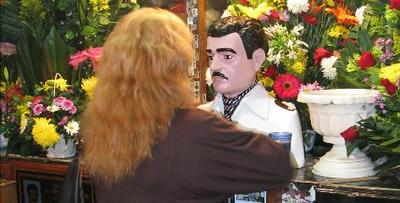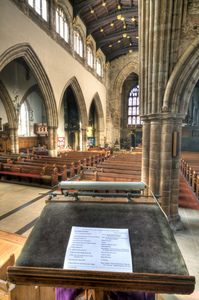
Yes. Believe it or not, a devotion has sprung up in Mexico:
In these dark times, the faithful still come to worship in the chapel of Jesus Malverde, Mexico’s patron saint of drug traffickers.
They kneel in front of his statue, dip flowers in water and wipe them tenderly over his face. They leave cryptic notes of thanks on the altar. They slip offerings into a donation box and buy talismans that say: “Malverde, bless my path and permit my return.”
Here in Culiacán, where about 20% of the economy depends on the illegal drug trade, the flow of worshipers has not diminished even as drug turf wars rage in other parts of the country, said the chapel’s caretaker, Jesus González.
“People need faith more now than ever,” González said. “We’re getting more people here because they want to be protected.”
The veneration of Malverde, a Robin Hood-style bandit who died in 1909, shows how deep the tradition of drug smuggling runs in Mexican culture — and how hard it will be to stamp out, said Tomas Guevara, a sociologist at the Autonomous University of Sinaloa.
Mexico has been racked by drug-related violence. The worst bloodshed has been in such border cities as Ciudad Juárez, where more than 500 people have been killed this year.
In Culiacán, such dangers are a way of life, Guevara said.
The city is in the heart of Mexico’s marijuana and opium-growing areas, about 450 miles south of Douglas, Ariz. Mexico’s most powerful drug kingpins, including Joaquin “Chapo” Guzmán, the Beltrán Leyva brothers and the Caro Quintero family, grew up near the city.
A study by the Autonomous University of Sinaloa last year estimated the drug trade brings in $3.8 billion to Sinaloa, about 20% of its total economy.
For decades the cartels avoided selling drugs there, and so cultivating marijuana or opium wasn’t seen as a bad thing, Guevara said. In fact, many kingpins were admired for building schools and bringing electricity to small towns.
“The growing of drugs was not as persecuted as it is now,” Guevara said. “It was an economic activity like any other.”
Like any tradesmen, he said, the smugglers developed their own patron saint: Jesus Malverde.
Continue here for the rest.

